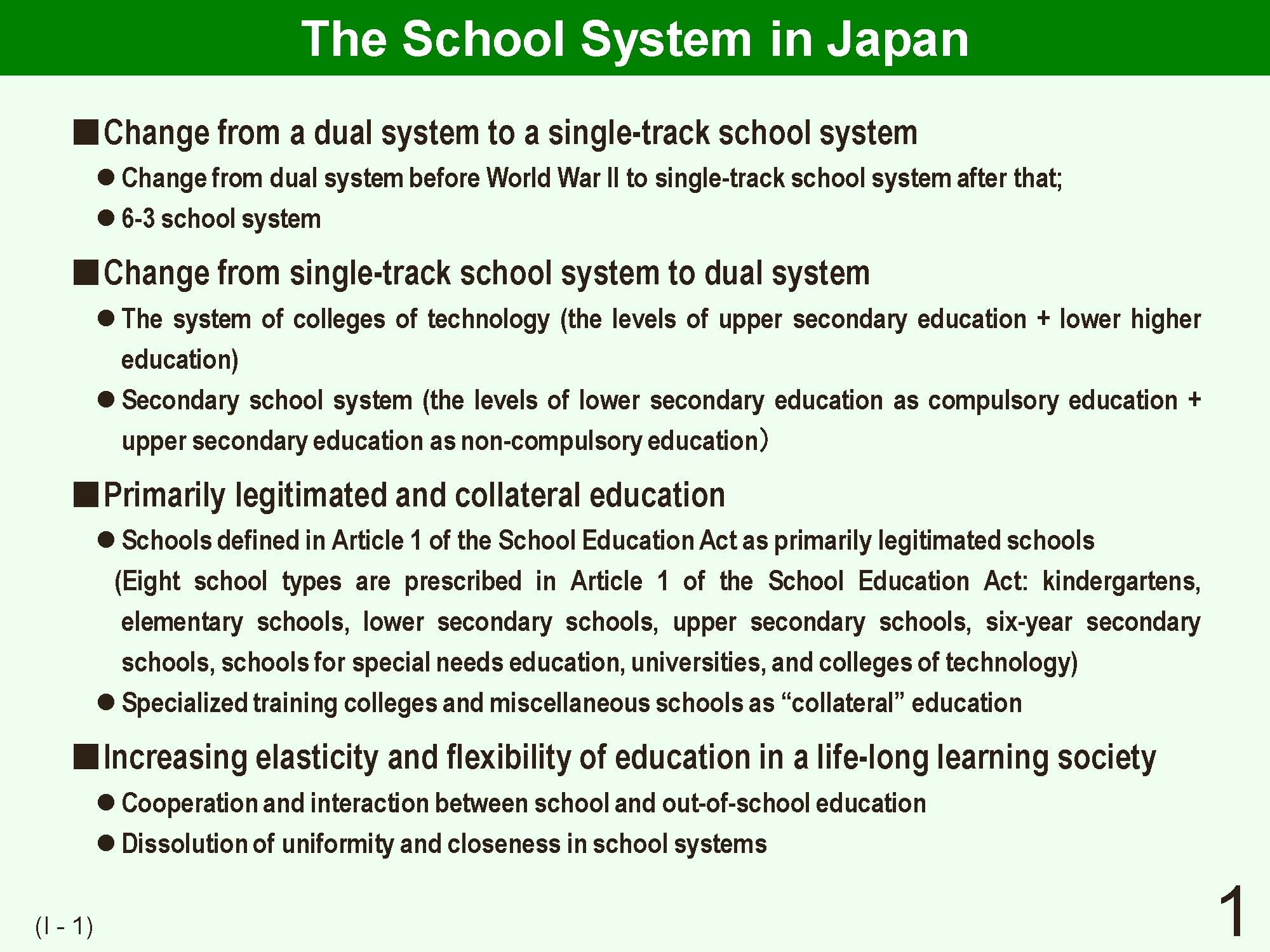| 1 | gI Outline of Japanese School Systemh | Previous | Next | JAPANESE |
|---|---|---|---|---|
 |
||||
| The school system in Japan was changed from a dual system to a single-track school system through educational reforms influenced by the United States after World War II. The 6-3 school system means not only extension of the period of compulsory education from 6 years to 9 (6+3) years, but also the articulation between elementary education schooling and secondary education schooling into a single-track school system.
As Japanese society developed and became more sophisticated, the incidence of advancement following compulsory education rapidly increased (educational explosion). It became difficult to meet the actual educational needs of people under the unified school system. Educational system reforms were needed to modify the single-track school system through establishment of colleges of technology and six-year secondary schools. In Japan, the principle of legalism is basic to the educational system. Ten different types of schools are provided and justified by Article 1 of the School Education Law (e.g. lineal). School system reforms have been implemented to build a life-long learning society. Cooperation or fusion between school education and social and out-of-school education are viewed as challenges leading to a relaxation of the rules of Japanfs educational system. |
||||
Please send your comments and concerns here
kamada@criced.tsukuba.ac.jp
Center for Research on International Cooperation in Educational Development(CRICED) University of Tsukuba
1-1-1, Tennodai, Tsukuba-shi, IBARAKI
305-857, JAPAN